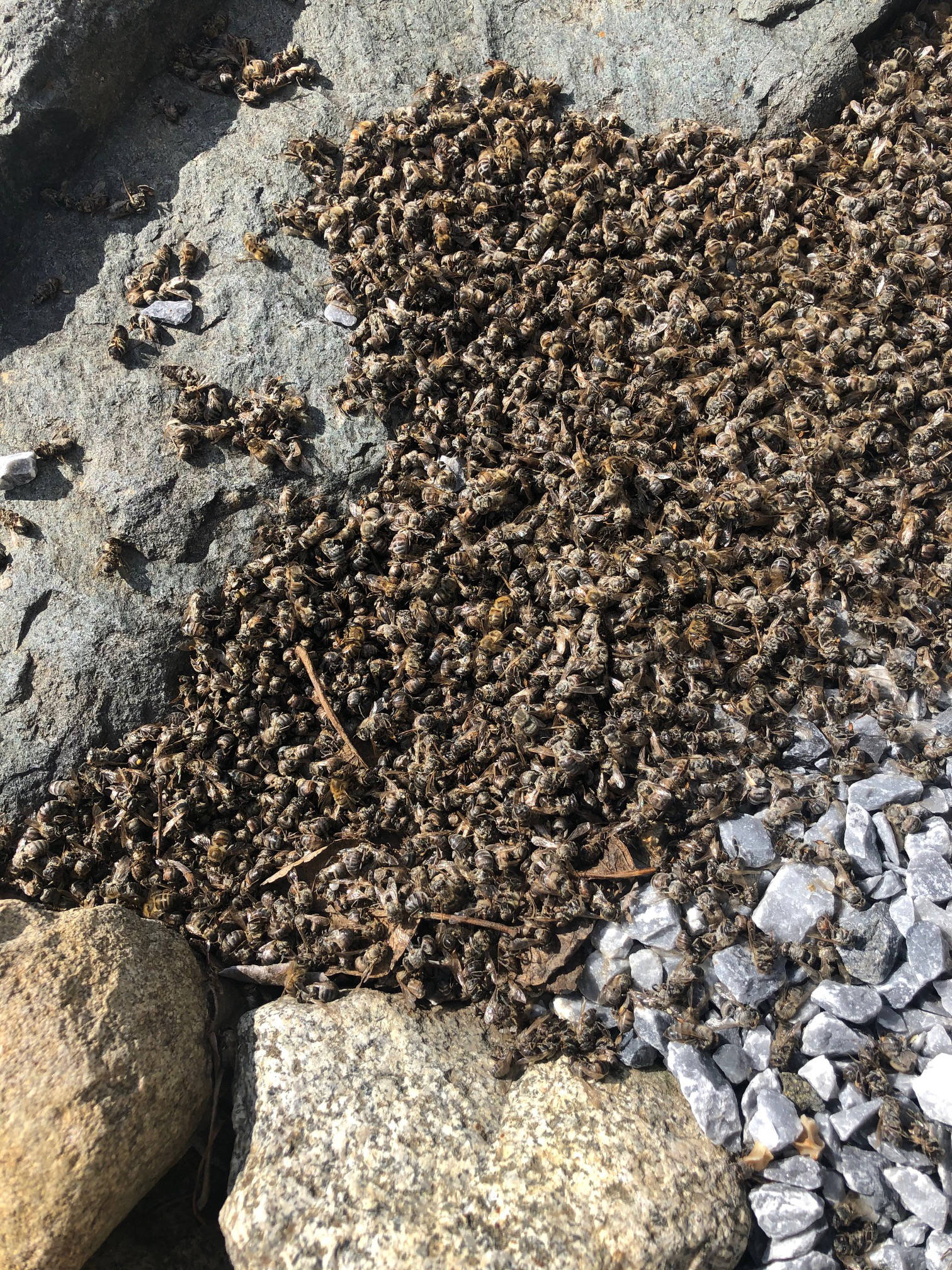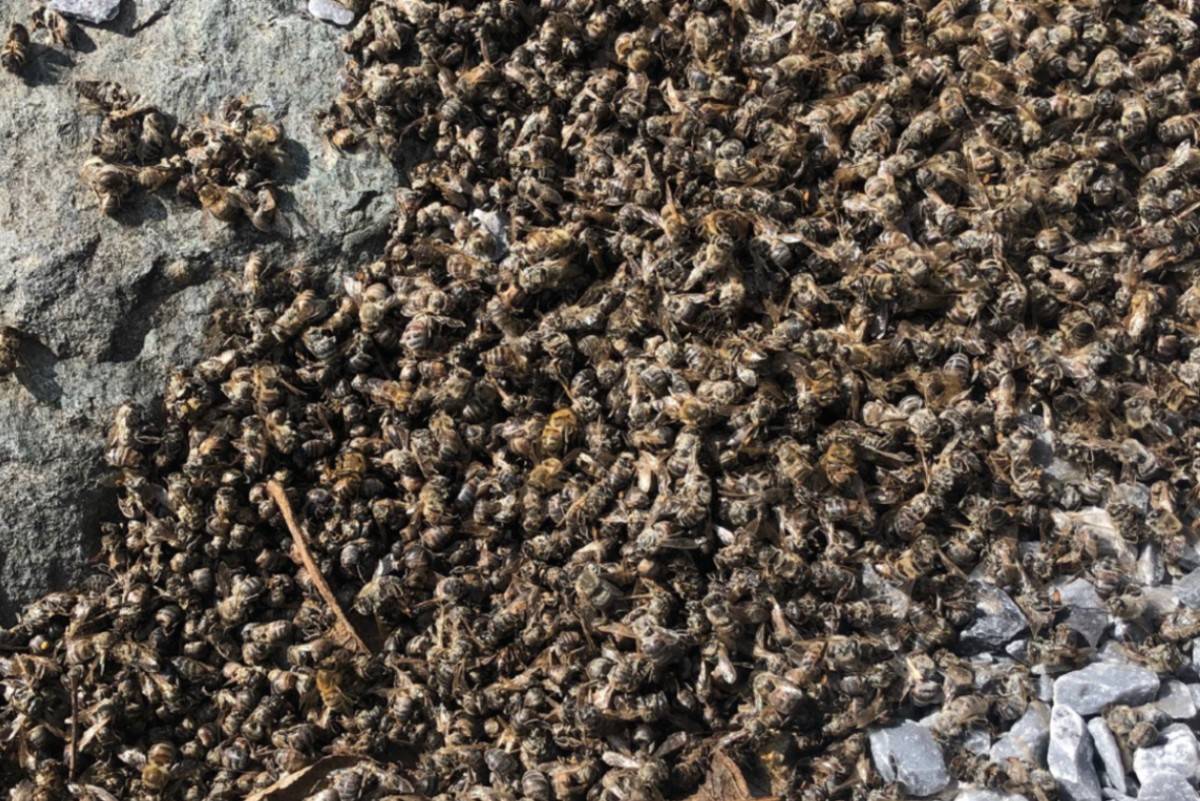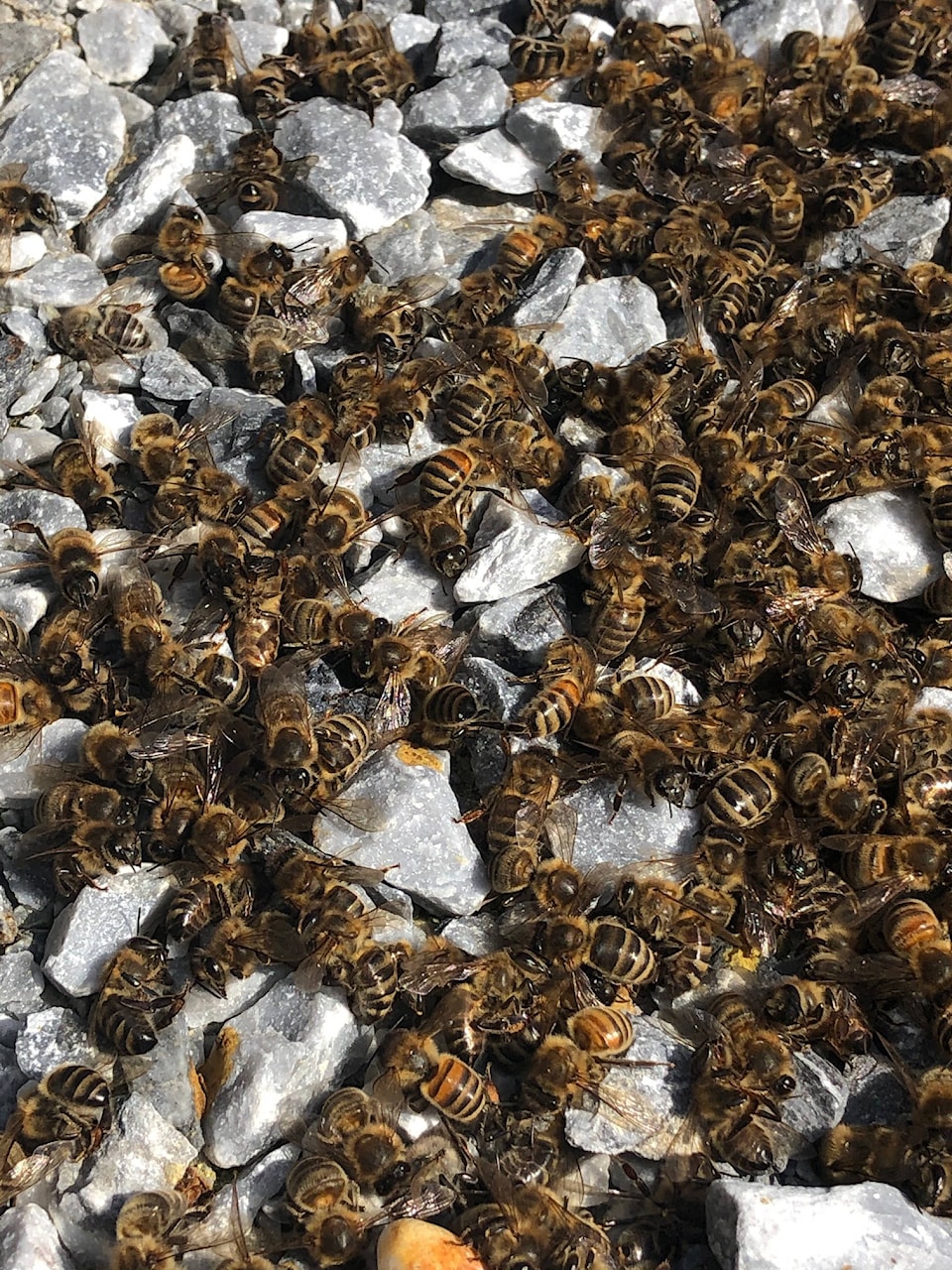A Trail family is urging people - near and far - to stop using toxic herbicides and pesticides.
Instead, go with natural alternatives that are friendly to the environment and all the life within it.
This plea from the O’Hearn-Stone family follows the grim demise of two beehives they have so lovingly tended to over the past few years.
Thousands of sweet little pollinators and their two fierce queens are dead after the workers bees came into contact with an unknown toxin while out on a forage - likely toxic chemicals sprayed on plants or trees - and brought it back to the hive.
“I first noticed that on a beautiful sunny day my bees did not fly out of their hive to forage,” began Darcee O’Hearn. “I found it very odd because they had been very active since our warmer weather.”
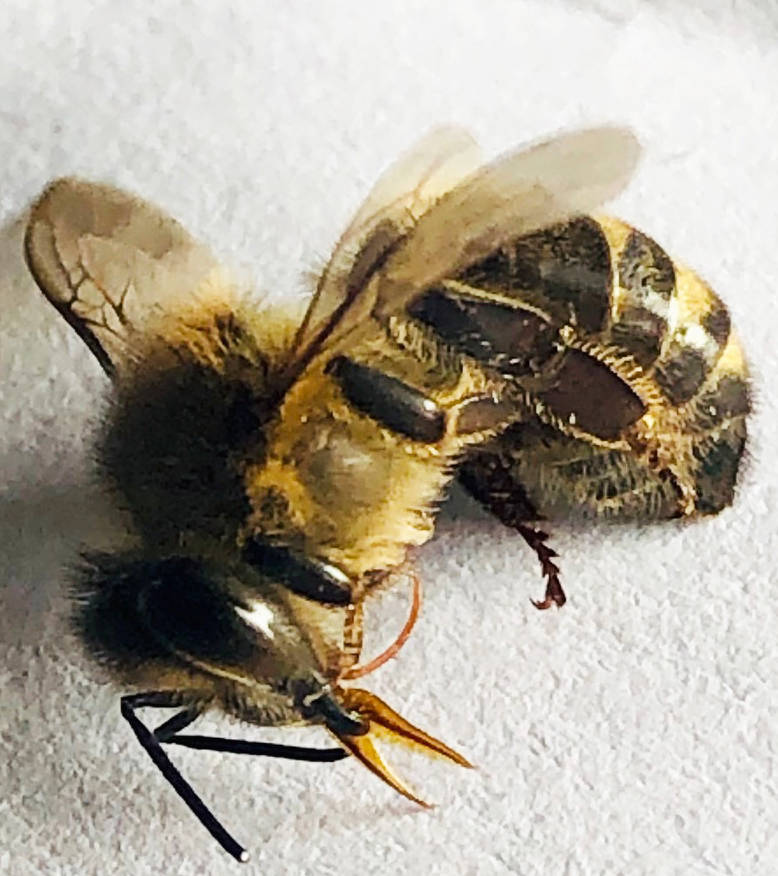
O’Hearn recalls relaxing in her backyard the afternoon of March 16 when she heard what sounded like raindrops coming from the hives.
“When I turned to see what the sound was, I was sickened by what I saw,” she told the Trail Times. “My bees were literally dropping from the skies, rolling out of their hives and crawling around on the ground unable to fly or orient themselves.
“It was horrible.”
She called a fellow beekeeper for a second opinion. When they opened the hives, it was very clear by the bees’ behavior as they spun and skipped on top of the frames and in front of their hives, that they were most likely poisoned.
“I cannot determine where the poison came from, but they showed all the signs of toxic poisoning,” O’Hearn explained.
Those signs include a sudden drop in foragers, a large mat of dead bees in front of the hive or on the bottom board, spinning, skipping, erratic behavior, an inability to fly, and “tongues” hanging out.
As the family’s hives are kept in a fenced yard, O’Hearn suspects when the forager bees went to look for water or nectar, the animals carried harsh chemicals back to the hive on their fur.
“Because bees can fly up to two kilometres to forage, our communities must come together and protect backyard bees, bumblebees, sweat bees, butterflies, leaf cutters, and other foragers who collect nectar,” O’Hearn said. “Also negatively affected are birds, beetles, various flies and anything else that indulges on nectar or pollen and has the ability to transfer pollen.”
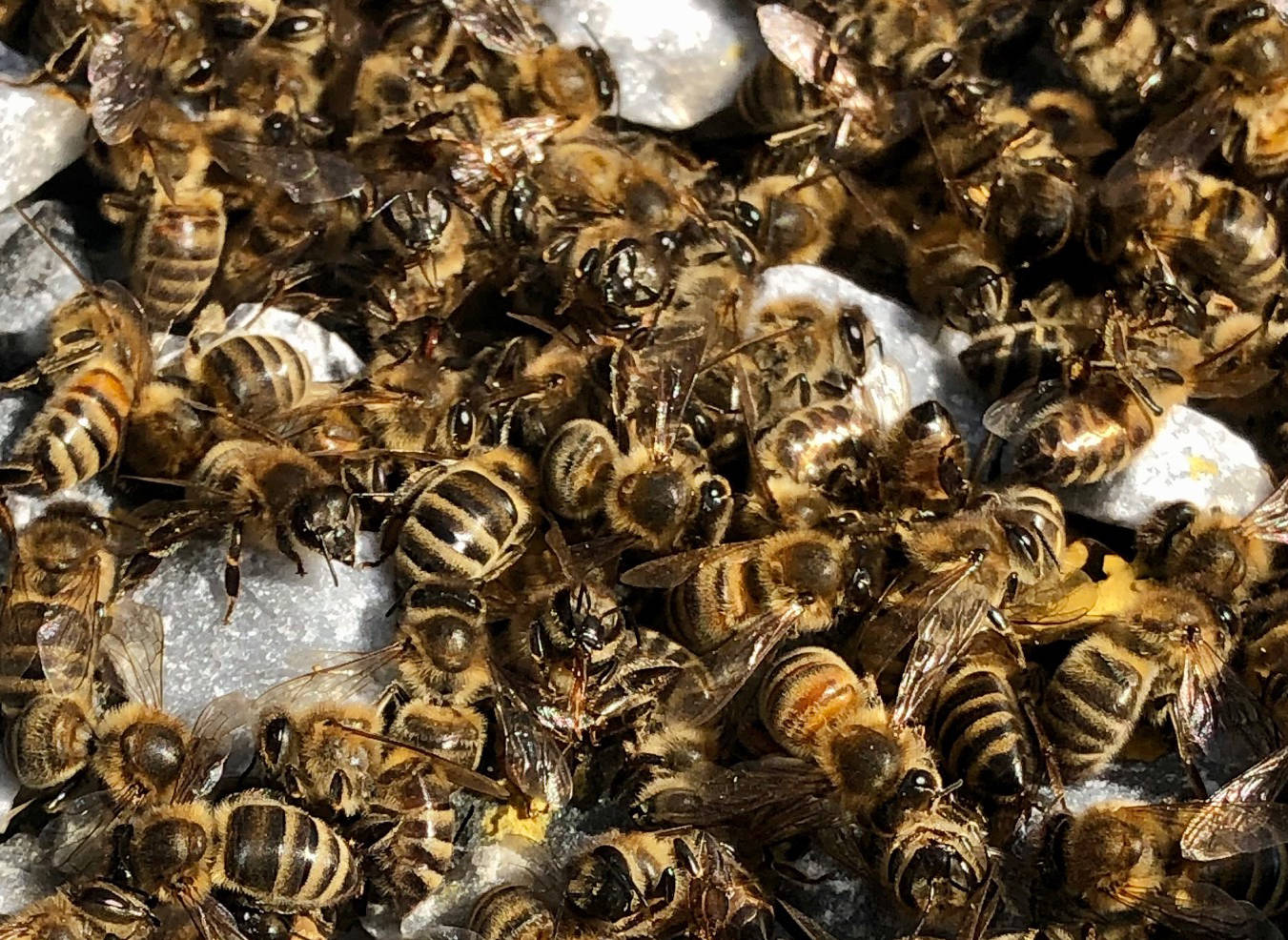
There are no laws that will convince people to stop using herbicides and pesticides.
“But with education and learning more about our bees, it will become impossible to ignore and there will be a natural and conscious decision made to stop using toxic chemicals to manage our weeds and pests,” O’Hearn added.
“However, it is extremely important to stop now, before it’s too late.”
Instead of using toxic chemicals, O’Hearn urges locals to use natural alternatives. For those who don’t want to pull weeds or pay someone to do the job, spraying diluted pickling vinegar on weeds in warm weather will dry them up.
Blasting aphids with cold water and a castile soapy solution are some easy and cheap ways to protect crops and importantly - the bees.
Another suggestion is to avoid weeding all together with a rock garden or xeriscape, and place fresh water out for the foragers. For those willing to forgo chemicals and weed using only muscle, plant plenty of flowers and perennials which attract bees, with succession in mind, so they can forage all season long.
“If natural alternatives are not an option for you, there are ways to decrease the impact to bees,” says O’Hearn.
For those insistent on spraying dandelions, pull the heads off and spray in the evening.
Contact your local beekeepers when you spray so they can lock up their bees until it is safe to release them, she reasoned.
“Ask yourself, would you eat your fruits or vegetables without washing them after they’ve been sprayed?”
Each time an “icide” chemical is used, countless colonies of bees, butterflies and other vital foragers are affected, likely eliminated.
There is a better way.
“If we don’t take care of bees we will not be able to grow food locally,” O’Hearn stressed. “We need natural pollinators and backyard bees to sustain us. And this is not negotiable.”
With her bees and queen bees dead from poison, the mom-of-two says she will no longer keep hives within city limits.
“Because I can no longer stomach caring for these beautiful providers and then watching them die,” she shared. “It is senseless and preventable.”
Read more: Rossland teen heartbroken after his hives are poisoned
Read more: Good causes acknowledged by choice
newsroom@trailtimes.ca
Like us on Facebook and follow us on Twitter
